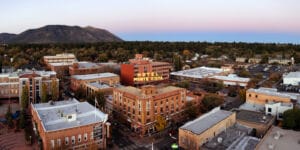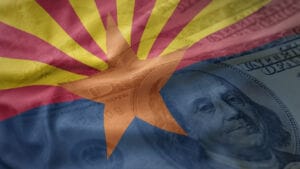Valley drivers love their cars, and more than anywhere else in the country, they put their money where their hearts are. In fact, it costs more to get around in Phoenix – a city that was designed for cars – than in any other U.S. metro, statistics show.
According to the Bureau of Labor Statistics’ newly released Consumer Expenditure Surveys, metro Phoenix households spend an average of $12,776 per year on transportation, whether by private car or public transportation. That’s more than any other metro in the country – even traffic-choked Los Angeles and jam-packed New York, as well as cities with notoriously long commutes, including Washington, D.C.
The main reason is Phoenix area drivers spend more to buy vehicles than drivers do anywhere else in the country. A lot more, according to 2019-20 data collected by the bureau.
The average U.S. household spent $4,429 per year on car purchases. Phoenix households spent 59% more than that, an average of $7,022 per year.
The effect is even more pronounced when viewed as a percentage of household expenses, the data show. For Valley households, buying a car made up 11.2% of all yearly spending, while nationwide it averaged 7.12%. Even the second biggest spender by this measure, Baltimore, averaged just 7.84%.
What’s more, Phoenix holds the top spot among metros in transportation spending despite spending less than average on gasoline, maintenance, public transit and every other sort of transportation expense tracked by the Bureau of Labor Statistics.
A check around the Valley with car dealership associations, academics, government agencies and a Bureau of Labor Statistics economist came up blank as to why. Officials with the Arizona Department of Transportation declined to comment because they hadn’t studied the issue and didn’t want to speculate.
But it’s widely understood that Phoenix was built for motorized vehicles.
The city has had a love affair with the automobile since at least the 1950s, when “cruising Central” first became a popular pastime, according to Marshall Shore, an unofficial “official Arizona Hipstorian.”
With cheap desert surrounding Phoenix and the availability of cars when the city started to boom after World War II, it didn’t need to have a dense urban core. Instead, it’s a 14,587 square mile area of sprawling suburbs and abutting cities.
And despite efforts like the installation of light rail, it’s still designed for cars, Shore said.
“Phoenix is and was a car-centric city,” Shore said. “Unlike other cities that built up, Phoenix built out, and it’s still building out.”
Some speculate car spending is so high because of the price of used cars because Arizona’s dry climate keeps them in better condition than rust-prone regions. But according to data provided by ISeeCars.com, a car aggregation and research website, a used car in Phoenix costs only $85 more than the national average, at $24,800 versus $24,715.
Another possible factor is the area’s classic car culture. Muscle cars, lowriders, street racers and supercars are commonly seen in the Valley, which also is home to a host of collector-car auctions and shows each year.
“There’s no better place to be for someone who loves cars,” said Larry Oliver, manager of the Rock ‘n’ Roll Classic Car Show at Talking Stick.
For many, cars are more than just a tool to get around. They’re an obsession, “a disease,” in Oliver’s words, and a source of community for the people who care about them.
“They’re there at the (car) show every week. They never miss a week, and they meet their friends there, and for some of the guys, they’ve been meeting up there for years,” Oliver said.
As home to one of the world’s largest collector car auctions, metro Phoenix also has an entire industry of businesses dedicated to the sale, storage and refurbishing of collector cars.
“That attracts people from all over the world to buy them, of course, and they keep them right here,” Oliver said. “And then that leads people to buy homes here, either as full-time residents or winter visitors.”
It’s a niche part of the car market, but there is a lot of money connected to it.
“For one of these cars in good condition you’re looking at an average of $75,000 to $100,000, and it’s not uncommon for someone to buy a car and then put $150,000 into it,” Oliver said.
While Phoenix residents already shell out for automobiles, spending is expected to get only higher due to international factors, like a shortage in computer chip production that is slowing the manufacturing of vehicles everywhere.
“The number of vehicles produced by all manufacturers, foreign and domestic, has dropped precipitously over the last year because of the chip shortage,” said Knox Ramsey, president of the Valley Auto Dealers Association. “It’s going to get worse before it gets better.”
Story by Michael Patton, Cronkite News



